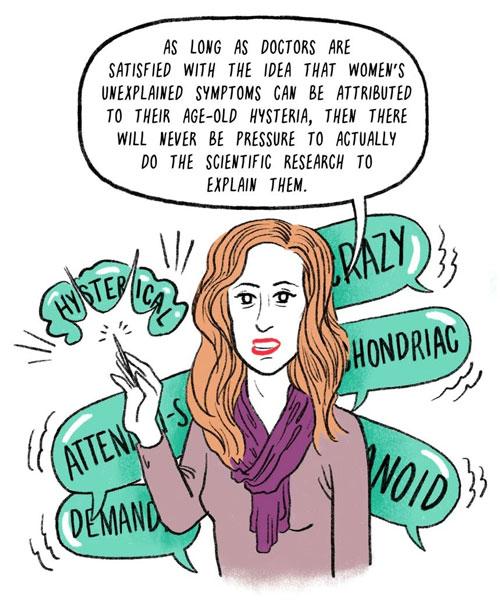FOR centuries, doctors readily diagnosed women with “hysteria,” an alleged mental health condition that explained away any behaviors or symptoms that made men…uncomfortable.
A fondness of writing, symptoms of post-traumatic stress disorder or depression, and even infertility — for the best part of two centuries, all of these and more could easily fall under the umbrella of “female hysteria.”
Throughout the 18th and 19th centuries, female hysteria was one of the most commonly diagnosed “disorders.” But the mistaken notion that women are somehow predisposed to mental and behavioral conditions is much older than that.
In fact, the term hysteria originated in Ancient Greece. Hippocrates and Plato spoke of the womb, hystera, which they said tended to wander around the female body, causing an array of physical and mental conditions.
But what was female hysteria supposed to be, what were its symptoms, how did doctors “treat” it, and when did they cease to diagnose it as a medical condition?
These are some of the questions that we answer in this Curiosities of Medical History feature.
While the original notions of female hysteria extend far into the history of medicine and philosophy, this diagnostic became popular in the 18th century.
In 1748, French physician Joseph Raulin described hysteria as a “vaporous ailment” —affection vaporeuse in French — an illness spread through air pollution in large urban areas.
While Raulin noted that both men and women could contract hysteria, women were, according to him, more predisposed to this ailment because of their lazy and irritable nature.
In a treatise published in 1770–1773, another French physician, François Boissier de Sauvages de Lacroix, describes hysteria as something akin to emotional instability, “subject to sudden changes with great sensibility of the soul.”
Some of the hysteria symptoms that he named included: “a swollen abdomen, suffocating angina [chest pain] or dyspnea [shortness of breath], dysphagia [difficulty swallowing], […] cold extremities, tears and laughter, oscitation [yawning], pandiculation [stretching and yawning], delirium, a close and driving pulse, and abundant and clear urine.”
De Sauvages agreed with his predecessors that this condition primarily affected women, and that “men are only rarely hysterical.” According to him, sexual deprivation was often the cause of female hysteria. To illustrate this, he presented the case study of a nun affected by hysteria, who became cured only when a well-wishing barber took it upon himself to pleasure her. Another means of “treating” instances of hysteria was through mesmerism, an alleged psychosomatic therapy popularized by Franz Anton Mesmer, a German doctor who was active in 18th-century Europe.









